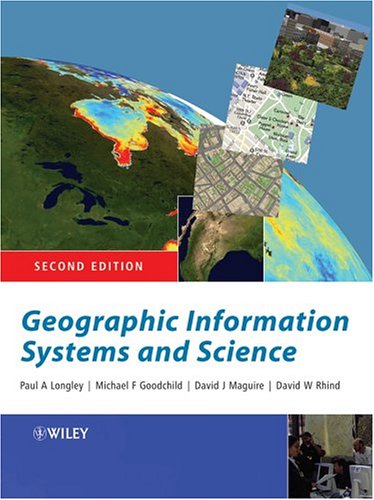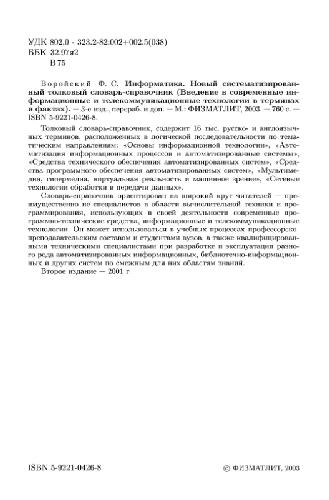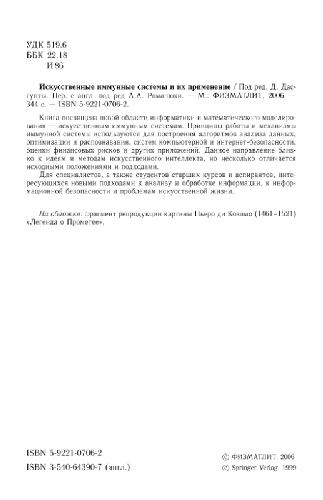Paul A. Longley, Michael F. Goodchild, David J. Maguire, David W. Rhind9780470870006, 0470870001, 047087001X
Table of contents :
Geographical Information Systems and Science……Page 3
Contents……Page 7
Foreword……Page 11
Addendum……Page 12
Preface……Page 13
List of Acronyms and Abbreviations……Page 17
I Introduction……Page 21
1 Systems, science, and study……Page 23
1.1 Introduction: why does GIS matter?……Page 24
1.2 Data, information, evidence, knowledge, wisdom……Page 31
1.3 The science of problem solving……Page 33
1.4 The technology of problem solving……Page 36
1.5 The business of GIS……Page 44
1.6 GISystems, GIScience, and GIStudies……Page 48
1.7 GIS and geography……Page 51
Further reading……Page 53
2 A gallery of applications……Page 55
2.1 Introduction……Page 56
2.2 Science, geography, and applications……Page 59
2.3 Representative application areas and their foundations……Page 61
Further reading……Page 80
II Principles……Page 81
3 Representing geography……Page 83
3.1 Introduction……Page 84
3.2 Digital representation……Page 85
3.3 Representation for what and for whom?……Page 87
3.4 The fundamental problem……Page 88
3.5 Discrete objects and continuous fields……Page 90
3.6 Rasters and vectors……Page 94
3.7 The paper map……Page 96
3.8 Generalization……Page 100
3.9 Conclusion……Page 102
Further reading……Page 103
4 The nature of geographic data……Page 105
4.2 The fundamental problem revisited……Page 106
4.3 Spatial autocorrelation and scale……Page 107
4.4 Spatial sampling……Page 110
4.5 Distance decay……Page 113
4.6 Measuring distance effects as spatial autocorrelation……Page 115
4.7 Establishing dependence in space……Page 121
4.8 Taming geographic monsters……Page 124
4.9 Induction and deduction and how it all comes together……Page 126
Further reading……Page 127
5 Georeferencing……Page 129
5.1 Introduction……Page 130
5.2 Placenames……Page 132
5.3 Postal addresses and postal codes……Page 133
5.5 Cadasters and the US Public Land Survey System……Page 134
5.6 Measuring the Earth: latitude and longitude……Page 135
5.7 Projections and coordinates……Page 137
5.8 Measuring latitude, longitude, and elevation: GPS……Page 142
5.9 Converting georeferences……Page 143
5.10 Summary……Page 145
Further reading……Page 146
6 Uncertainty……Page 147
6.1 Introduction……Page 148
6.2 U1: Uncertainty in the conception of geographic phenomena……Page 149
6.3 U2: Further uncertainty in the measurement and representation of geographic phenomena……Page 156
6.4 U3: Further uncertainty in the analysis of geographic phenomena……Page 164
6.5 Consolidation……Page 172
Further reading……Page 173
III Techniques……Page 175
7 GIS Software……Page 177
7.2 The evolution of GIS software……Page 178
7.3 Architecture of GIS software……Page 179
7.5 GIS software vendors……Page 185
7.6 Types of GIS software systems……Page 187
Questions for further study……Page 194
Further reading……Page 195
8 Geographic data modeling……Page 197
8.1 Introduction……Page 198
8.2 GIS data models……Page 199
8.3 Example of a water-facility object data model……Page 212
8.4 Geographic data modeling in practice……Page 215
Questions for further study……Page 216
Further reading……Page 217
9 GIS data collection……Page 219
9.1 Introduction……Page 220
9.2 Primary geographic data capture……Page 221
9.3 Secondary geographic data capture……Page 225
9.4 Obtaining data from external sources (data transfer)……Page 231
9.6 Managing a data collection project……Page 235
Further reading……Page 236
10 Creating and maintaining geographic databases……Page 237
10.2 Database management systems……Page 238
10.3 Storing data in DBMS tables……Page 242
10.4 SQL……Page 245
10.5 Geographic database types and functions……Page 246
10.6 Geographic database design……Page 247
10.7 Structuring geographic information……Page 249
10.9 Multi-user editing of continuous databases……Page 255
10.10 Conclusion……Page 257
Questions for further study……Page 258
Further reading……Page 259
11 Distributed GIS……Page 261
11.1 Introduction……Page 262
11.2 Distributing the data……Page 264
11.3 The mobile user……Page 270
11.4 Distributing the software: GIServices……Page 277
Further reading……Page 279
IV Analysis……Page 281
12 Cartography and map production……Page 283
12.1 Introduction……Page 284
12.2 Maps and cartography……Page 287
12.3 Principles of map design……Page 290
12.4 Map series……Page 301
12.5 Applications……Page 304
Further reading……Page 307
13 Geovisualization……Page 309
13.1 Introduction: uses, users, messages, and media……Page 310
13.2 Geovisualization and spatial query……Page 313
13.3 Geovisualization and transformation……Page 317
13.4 Immersive interaction and PPGIS……Page 322
13.5 Consolidation……Page 329
Questions for further study……Page 332
Further reading……Page 333
14 Query, measurement, and transformation……Page 335
14.1 Introduction: what is spatial analysis?……Page 336
14.2 Queries……Page 340
14.3 Measurements……Page 343
14.4 Transformations……Page 349
Further reading……Page 359
15 Descriptive summary, design, and inference……Page 361
15.1 More spatial analysis……Page 362
15.2 Descriptive summaries……Page 363
15.3 Optimization……Page 372
15.4 Hypothesis testing……Page 379
15.5 Conclusion……Page 381
Further reading……Page 382
16 Spatial modeling with GIS……Page 383
16.1 Introduction……Page 384
16.2 Types of model……Page 389
16.3 Technology for modeling……Page 396
16.4 Multicriteria methods……Page 398
16.5 Accuracy and validity: testing the model……Page 399
Questions for further study……Page 401
Further reading……Page 402
V Management and Policy……Page 403
17 Managing GIS……Page 405
17.1 The big picture……Page 406
17.2 The process of developing a sustainable GIS……Page 410
17.3 Sustaining a GIS – the people and their competences……Page 419
17.4 Conclusions……Page 421
Questions for further study……Page 422
Further reading……Page 423
18 GIS and management, the Knowledge Economy, and information……Page 425
18.1 Are we all in ‘managed businesses’ now?……Page 426
18.2 Management is central to the successful use of GIS……Page 428
18.3 The Knowledge Economy, knowledge management, and GIS……Page 433
18.4 Information, the currency of the Knowledge Economy……Page 435
18.5 GIS as a business and as a business stimulant……Page 442
Further reading……Page 444
19 Exploiting GIS assets and navigating constraints……Page 445
19.1 GIS and the law……Page 446
19.2 GIS people and their skills……Page 451
19.3 Availability of ‘core’ geographic information……Page 454
19.4 Navigating the constraints……Page 460
19.5 Conclusions……Page 464
Further reading……Page 465
20 GIS partnerships……Page 467
20.2 Collaborations at the local level……Page 468
20.3 Working together at the national level……Page 470
20.4 Multi-national collaborations……Page 478
20.5 Nationalism, globalization, politics, and GIS……Page 479
20.6 Extreme events can change everything……Page 484
Further reading……Page 490
21 Epilog……Page 491
21.2 A consolidation of some recurring themes……Page 492
21.3 Ten ‘grand challenges’ for GIS……Page 498
21.4 Conclusions……Page 505
Further reading……Page 506
Index……Page 507







Reviews
There are no reviews yet.